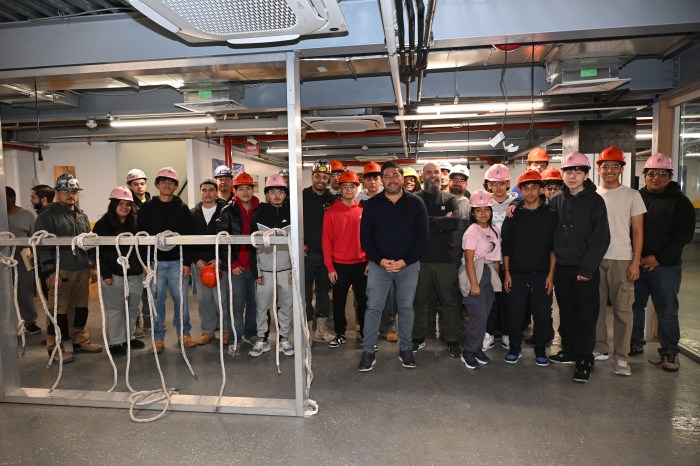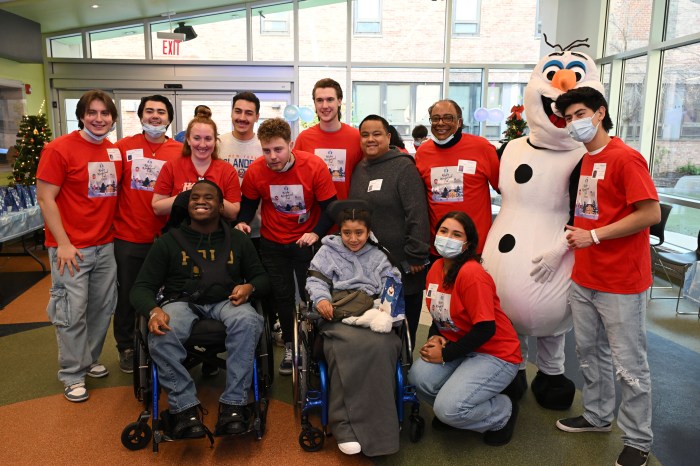Imagine that your child reaches the age of three and you still cannot communicate with them. They throw tantrums, sometimes exhibit obsessive behavior, and do not always seem to be aware of people around them.
These are signs that a child may have the neurobiological disorder, autism. According to the organizations, Autism Speaks and the Autism Society of America, one out of every 166 births results in autism.
Through District 75 and its Office of Autism, the New York City Department of Education is working to meet the needs of such children.
“We’ve been servicing children with autism for over 10 years but it’s just in the last three years that we developed the Office of Autism to manage the students,” said Stephanie McCaskill, coordinator of the Office of Autism.
Under District 75, there are 12 schools in Queens that meet the special needs of autistic children. Children between the ages of three and 21 with all levels of the disorder are eligible to attend the schools.
Through the Office of Autism, teachers are provided with specialized training as well as other support. It provides workshops for new teachers, more experienced teachers, administrators and parents, among others.
“There’s a need because the population (of autistic students) is increasing, more classes with autism are opening, and it’s important that teachers that are trained in special education receive more training in autism,” McCaskill said. “We have great teachers, wonderful teachers, but we would like them to know more about the different methodologies to create this eclectic approach.”
Some of the classroom methods that are employed in the classroom are Applied Behavioral Analysis; Treatment and Education of Autistic and Related Communication Handicapped Children (TEACH); the Miller Method, and the Picture Exchange Communication System (PECS).
P4 at PS 179, an elementary school in Fresh Meadows, has 45 autistic students among its population, ranging in age from three to 12. Some of the children come in at age three with no communication skills at all. The students cover all spectrums of severity of autism, with some of the students being highly verbal.
The classrooms in this school, as well as others that serve autistic children are specially designed to maximize the learning experience. Pictures are used to help children learn and associate. A black line in the hallway helps children learn to walk in a line. The computer station has walls on either side to discourage distractions. Different textures are used to help children grasp concrete ideas.
Depending on the management needs of the students, they are placed in classrooms with a ratio of six students to one teacher and one paraprofessional or eight students to one teacher and one paraprofessional.
“The focus is on getting them to be as independent as possible with the skills that are necessary for them to move on,” said Marcy Berger, the school’s principal. “The focus really is the communication. That’s what comes into play on everything.”
Along with working on the students’ verbal skills, they also learn skills such as toilet training, how to brush their teeth, making eye contact, being aware of other people around them and how to follow simple one-step directions. Other special features of the school are speech therapy and physical therapy.
All of the teachers at P4 are licensed by both the city and state. Berger said that they also are constantly going through professional development programs.
Rosaria Surace, who teaches children ages 10, 11 and 12 at P4, said that she enjoys seeing the children have fun while they learn. She also said she likes to be able to teach in different ways to meet the various needs of the students.
For Surace, the most rewarding parts of her job are “seeing some of the children who were non-verbal learn how to speak and how to ask for things, the hugs that you get every day, just the smiles on their faces. They’re amazing.”
Cindy Jiang’s 12-year-old son Jim is a student in Surace’s class. He was diagnosed as being autistic at the age of five and began at P4 for first grade.
Jiang said that, especially since Jim was 10, he has improved a lot. He can now do math, read, tell time and follow directions. She said that his self-esteem has also gotten better.
“I just feel those teachers are not just the educator, not just the helper,” Jiang said. “They’re just like angels. They light up my son’s life. I so appreciate the great job they did.”
Debbie Cinelli’s son Christopher, also a 12-year-old in Surace’s class, has been a student at P4 for the last two years since moving from Long Island. Cinelli said that Christopher, who was diagnosed at age 5, now socializes more with other students whereas previously he socialized mostly with adults.
“I am very happy with the school,” Cinelli said of P4. “When I walk into the door with Chris . . . everybody knows him. It seems like everybody at the school is wonderful.”
Berger said that the school sees many signs of success in its students. Examples are children learning how to communicate, make eye contact and even learn how to go to the bathroom themselves.
“To know that you had a piece in something and that there’s a possibility for success . . . (there’s) nothing like it,” said Berger, who has been with the school for 11 years, beginning as a teacher and working her way up to principal.
For more information on District 75, its programs and its schools, visit https://schools.nycenet.edu/d75 or call (212) 802-1500.

































